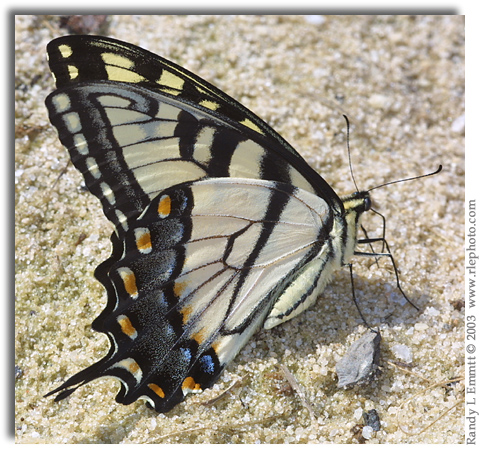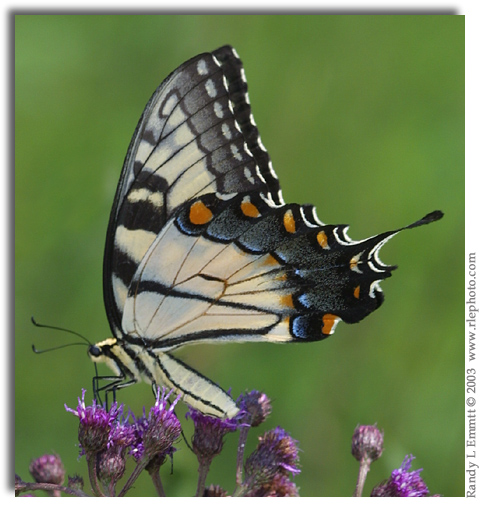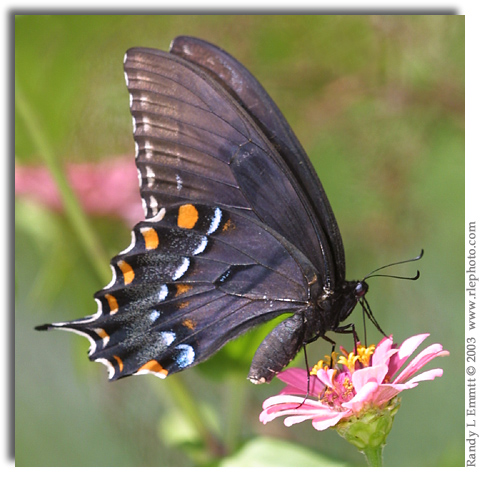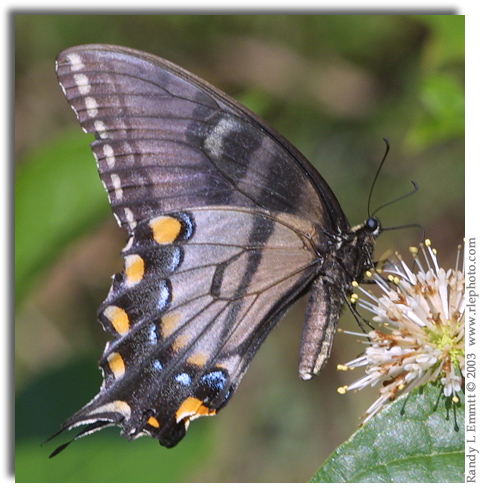Eastern Tiger Swallowtail
Papilio glaucus
Size:
Wingspan is 2 1/2 - 4 1/2 inches.
Similar Species:
Appalachian Tiger Swallowtail
Also dark form females resemble
Spicebush Swallowtail
Black Swallowtail (female)
Habitat:
Woodlands, fields, clearings and gardens. Sometimes seen soaring at the
treetops and flying along waterways.
Range/Abundance:
Very common in the piedmont and mountains, uncommon in the coastal plain.
The most common swallowtail species east of the Mississippi River.
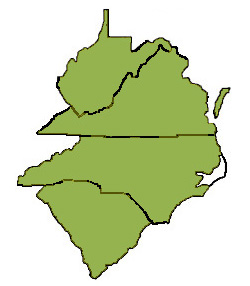
Flight Period:
Adults fly from mid March until mid October in two to three broods with
no apparent gaps between broods.
Larval Host Plants:
Yellow Poplar Liriodendron tulipifera and Wild Black Cherry Prunus
serotina are the most common host plants.
Comments:
These swallowtails can be quite variable from brood to brood. The spring
brood is small when compared to the much larger summer brood.
Black or dark form females are more common the further south you go.
The male at the top was taken in the Sandhills Gamelands in Scotland Co., NC on June 8, 2002. Both the center and bottom photos were taken in Caswell Co., NC on August 4, 2002.
Start > Species List > Swallowtails >
